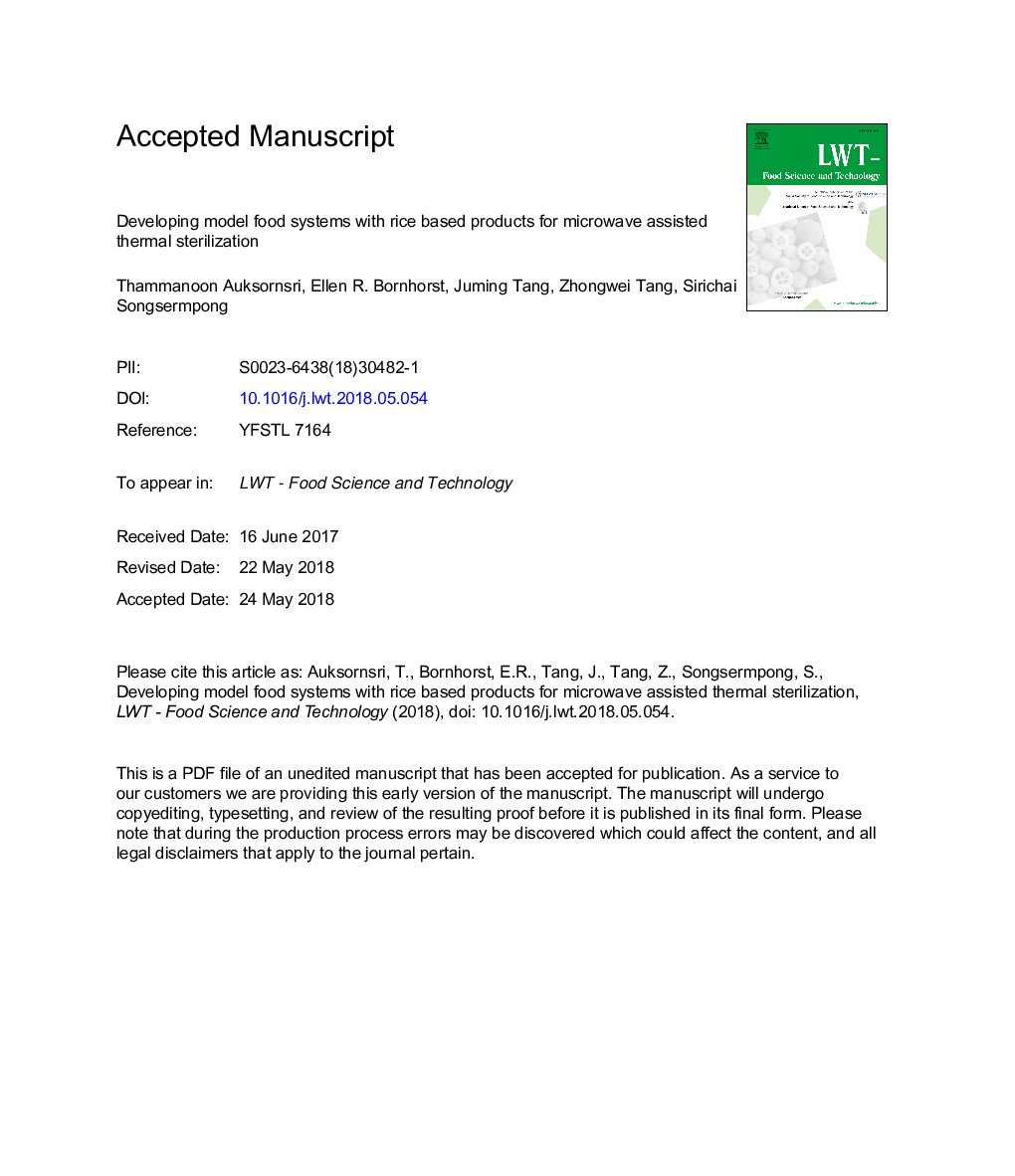| Article ID | Journal | Published Year | Pages | File Type |
|---|---|---|---|---|
| 8890648 | LWT - Food Science and Technology | 2018 | 36 Pages |
Abstract
Model foods are effective tools to evaluate heating patterns and determine hot and cold spot locations in food packages during microwave-assisted thermally sterilization (MATS) processes. Previous research on model food development has focused on high-moisture foods, with limited information on medium-moisture foods (0.2-0.6â¯g water/g food). This research aimed to develop rice model foods to simulate medium-moisture food during MATS processing. The optimal composition of a rice flour gel (RFG) model food was 0.3â¯g/g rice flour, 0.135â¯g/g tapioca starch, 0.001â¯g/g xanthan gum, 0.005â¯g/g d-ribose, and 0.559â¯g/g water, and a rice to water ratio of 1:1.2â¯g/g with 0.005â¯g/g d-ribose for the rice grain (RG) model. The temperature sensitivities of the models' color parameters could be applicable for safety and quality attribute modeling; the RFG model had a larger range of z-values (11-31â¯Â°C) than the RG model (18-27â¯Â°C). Validation results showed that the RG model food received more thermal energy than the RFG model, with thermal treatment equivalents at 121â¯Â°C of 60.3 and 6.5â¯min, respectively. The heating pattern in RFG medium-moisture model food was consistent with high-moisture models in MATS processing. Model foods developed in this research could be helpful tools for microwave process development for medium-moisture foods.
Related Topics
Life Sciences
Agricultural and Biological Sciences
Food Science
Authors
Thammanoon Auksornsri, Ellen R. Bornhorst, Juming Tang, Zhongwei Tang, Sirichai Songsermpong,
